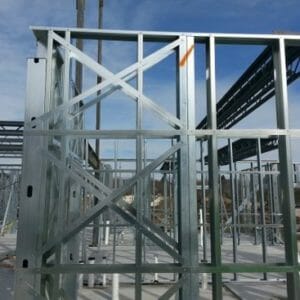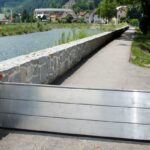Subtotal: $200.00
- Course No E – 1817
- PDH Units: 6
No data found for Custom Course Number
No data found for Custom Course Units
- Course No E – 1817
- PDH Units: 6
Intended Audience: HVACl & Mechanical Engineers
Credits: 6 PDH Units
Heating and cooling load calculations are carried out to estimate the required capacity of heating and cooling systems, which can maintain the required conditions in the conditioned space. To estimate the required cooling or heating capacities, one has to have information regarding the design indoor and outdoor conditions, specifications of the building, specifications of the conditioned space (such as the occupancy, activity level, various appliances and equipment used etc.) and any special requirements of the particular application. For comfort applications, the required indoor conditions are fixed by the criterion of thermal comfort, while for industrial or commercial applications the required indoor conditions are fixed by the particular processes being performed or the products being stored. Generally, heating and cooling load calculations involve a systematic and step wise procedure, which account for all the building energy flows. In practice, a variety of methods ranging from simple rules-of-thumb to complex transfer function methods are used to arrive at the building loads. This 6- hour course provides a procedure for preparing a manual calculation for cooling load using CLTD/CLF method suggested by ASHRAE and includes two detailed examples. For more advanced methods such as TFM, the reader should refer to ASHRAE and other handbooks.
Learning Objectives:
At the successful conclusion of this course, you will learn the following knowledge and skills:- Understand the basic terminology and definitions related to air conditioning load calculations
- Explain the differences between heating and cooling load design considerations
- Explain the difference between 1) space heat gain v/s cooling load 2) space cooling v/s cooling load and 3) external loads v/s internal loads
- Differentiate between sensible and latent loads
- List commonly used methods for estimating cooling loads
- Estimate the internal and external cooling loads using CLTD/CLF method from building specifications, design indoor and outdoor conditions, occupancy etc.
- Describe various equations and the information sources to determine conductive load through opaque building elements.
- Describe various equations and information sources to determine the solar transmission load through glazing.
- Describe various equations and information sources to determine the internal load due to people, lights and power appliances.
- Determine the supply air flow rate
- Learn by examples the detailed methodology to cooling load calculations
- Learn the functional parameters of software programs such as TRACE 700 and CHVAC
Course Reviews
4.7
- 5 stars2
- 4 stars1
- 3 stars0
- 2 stars0
- 1 stars0
Once completed, your order and certificate of completion will be available in your profile when you’re logged in to the site.


 E - 1130 Steel Design - Full 8 Hours course - Updated to AISC 14th edition
E - 1130 Steel Design - Full 8 Hours course - Updated to AISC 14th edition 








Great Review Course and Materials
Great info
The information was valuable and presented well. However, I think I may have stumbled across a few errors.
1. I believe the solved equation for CFM for the latent load was shown incorrectly. CFM = Q/(1.08*DT). The equation is written in the pdf as CFM = Q*1.08/DT. I think I missed a question on the quiz because of this.
2. The mean temperature calculation seemed to be incorrectly done as well in the pdf. Where 90-(20/2) = 82? Maybe I missed something.
Thank you for the feedback.
Course file has been updated.